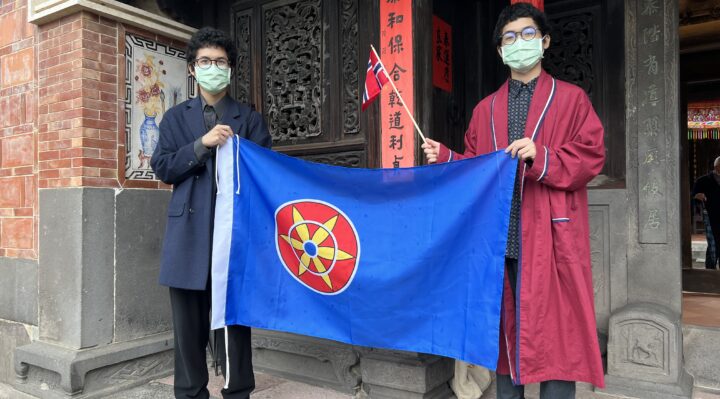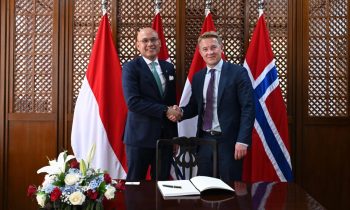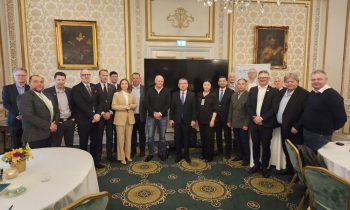
The Shih family from Taiwan with five children, 3 girls and twin boys, lived for a time in USA and soon became bilingual. As students they lived a global life. The twin boys got very interested in language. The youngest of them started early to learn Norwegian.
The siblings became exchange students in the States. Kai-Chieh Shih, the eldest twin, went back to the States to study Geography. His younger twin brother Yu-Jen Shih went to Wroclawski University in Poland to study history. He advised his elder brother also to study in Poland, so they had some years together in Europe.
Four years ago, Kai-Shieh got interested in learning Finnish and stayed twenty days in Finland. When he heard about Kven, a small minority language spoken outside Finland’s borders, it aroused his curiosity.
He started watching Norwegian Broadcasting NRK. A number of documentaries and programs are available on NRK TV online. Countless Kven words come from Norwegian. While he listens to what Kvens say, his brother who knows Norwegian help him translate what is said. Now he can speak both Finnish and Kven languages and is studying international relations. He also reads NRK Kven and Ruijan Kaiku, as the very first online newspaper in Kven.
Yu-Jen had learned Norwegian on his own long time before he went to Poland. In 2019 he became an exchange student at NTNU in Trondheim and now reads and speaks fluent Norwegian. Early this year their eldest sister Diana got married in Copenhagen to Frederik, a Danish man. His father is Norwegian. This year the couple moved to Taiwan where Frederik is lucky to have a brother-in-law who can speak to him in Norwegian and has time to teach him Chinese.
The curiosity that led to Kai-Chieh to learn Kven also made him worried about the state of the language. Kven is defined as one of Europe’s most endangered languages. This caused both brothers to start working on the revitalization of the Kven language. They have done this, among other things, with the help of well-known Disney movies and characters on their own Twitter account.
- – We have investigated how minority languages are saved around the world. The European Commission recommends using the language actively to the greatest possible extent, and one of the most effective ways is to use the language as part of the teaching together with the country’s majority language, Yu-Jen tells NRK.
This inspired the brothers to see if the Kven language could function as a language of instruction in various school subjects. The result is the very first textbook in Kven, «Johdatus geografiisseen».
- – We are both very interested in geography, and my brother has also studied it before. It was therefore natural for us to make a textbook in geography in Kven, the younger twin tells NRK.
- – The book is aimed at students in 7th grade. With this book we want to show that the Kven language can be used as a language of instruction.
Today, the Kven dictionary contains more than 10,000 words. However, geographical terms such as “geography” and “latitude” do not exist in the dictionary, and therefore Kai-Chieh has had to create and develop a number of words himself.
- – It has been stressful, Kai-Chieh reveals. – We are aware that Kvens are very careful with word choice and the origin of new words. Therefore, we have been concerned that our word choices are not correct.
The Facebook group “Kveenin sanat” (Kven words), where language users talk together about new and old Kven words, has helped the twins with many words. The brothers have nevertheless had to develop several words themselves.
– All new words that we have created are based on Norwegian or Meänkieli. In addition, we have been particularly careful about the origin of the words.
For example, when Kai-Chieh made a Kven word for “geography”, he drew inspiration from Kven and Norwegian words for “economy” and “history”. – All these words have their origin in ancient Greek, Kai-Chieh explains.
– In Kven, economics is «ökonomii» and history «historii». Therefore, we are quite sure that geography in Kven is «geografii», Kai-Chieh tells NRK.
Other “new” Kven words the brothers made for the book include “leveysgraadi” (latitude) and “formulaari” (form). Kai-Chieh still believes that the book contains many words and concepts that other Kven language users do not agree with.
The Kven people is an ethnic group living in the northernmost parts of Norway. Kvænangen is a municipality in northern Norway. Its name is assumed to come from kvæn (Kvens). The suffix angr (‘fjord’) is a common element in Norwegian place names (see for instance Stavanger, Geiranger, Hardanger and Varanger).
Their language is often considered as a dialect in Finland, but it is officially recognized as a minority language in Norway. In 2005 it received the status of a minority language within the framework of the European Charter for Regional or Minority Languages.
The Norwegian Kven Organization, established in 1987, has about 700 members. But there are other Kven organizations. So it is not known how many speaks the language, maybe between 2000 and 8000 people, most of them are over 60 years of age. An elementary school in Børselv offer their students to learn Kven.
Since 2006 the University of Tromsø may offer studies in Kven culture and language. The Kven grammar was published in 2014 in Kven and in 2017 in Norwegian.
On 16th of March 1340 it came to an agreement between the Norwegian-Swedish king and the Kvens. The first Kven organization was founded in Børselv on 16th of March in 1984. This became the start of an organized Kven movement. The Norwegian Kven`s Association agreed in 2014 to make 16th of March their date of the Kven people.
The Samis are a larger minority group in Norway and has their own flag since 2003. The Kvenland Association adopted the Kven flag at a meeting with members from Norway, Sweden and Finland in 2009. On a dark blue background is a sunflower which has been found on a number of objects in the Kven area (Kvenland).

Article in NRK: https://www.nrk.no/kvensk/i-taiwan-lages-den-aller-forste-fagboken-pa-kvensk-1.15961865?fbclid=IwAR0IGgWfeQyawkSs5ssT6IDMoIdgV8Crl0BIRmOPuwqEP4DBnQu8HwLJobc



